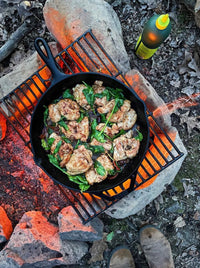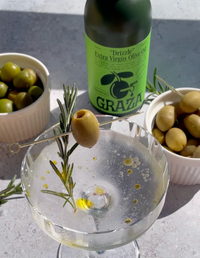
What is the Best Tasting Olive Oil?
Here’s how to pick the best bottle on the shelf… (hint: fresher is always better!!)
Olive oil isn't just a pantry staple — it's a kitchen hero. An ingredient that can elevate a salad, roast a chicken to perfection, or be enjoyed straight up with a baguette. But with shelves crowded by dozens of bottles, each of them claiming to be "cold-pressed" "premium" and “smooth”, it’s a little hard to know what actually tastes good.
Truth is — not all olive oils are created equal! The flavors can range from grassy and peppery to bitter or buttery depending on the specific olive variety used, to how (and where) the olive oil is processed. This guide breaks down how to recognize a great tasting olive oil, what to look for, and even how to properly taste test it.
What Makes an Olive Oil Taste Good?
A few factors determine the taste of a good olive oil:
Freshness: Olive oil has a limited shelf life. Look out for a harvest date on the bottle and aim to use it within 12 months of that date. (Bonus points if you can find the harvest date AND bottling date on the bottle!!!)
Extra Virgin: This clarifier determines how the oil was extracted (spoiler alert: all Extra Virgin Olive Oil is cold-pressed!) and also means it meets the highest industry-wide standards.
Single Origin: Single-origin or single varietal olive oil are often traceable — meaning you know what’s in the bottle and where it came from, and can trust there’s no funny business going on in there.
Packaging: Dark opaque bottles protect oil from light, which degrades olive oil over time.
Best Tasting Olive Oils by Flavor Profile
Robust and Grassy
These oils make themselves known. They usually are made from early-harvest olives and are high in polyphenols—the compounds that contribute to that pleasant bitter or peppery bite. If you like big flavor and bold finishes, this is your oil.
Best For: Finishing a bowl of pasta, dipping with a crusty bread, drizzling on a bowl of cottage cheese!
Mellow and Smooth
These oils might be a little less assertive, but they're still an all-stars in our kitchen! Think of them as reliable and versatile—they play well with both delicate and rich foods. They typically come from riper olives harvested later in the season.
Best For: Sautéing veggies, roasting a whole chicken, or making a pizza crust!
How to Taste Olive Oil?
Pour a tablespoon onto a spoon or small glass.
Taka whiff... do you smell fresh, clean, green aromas? (anything musty or waxy coming through, that's a red flag!!)
Slowly sip the oil, letting it coat your tongue and draw in a little air at the same time.
Swallow and note the after taste. That'll key you into when the olives were harvested!
And the Best Tasting Oil Is..
Great tasting olive oil doesn't need to be overly precious (or overly expensive), BUT it should bring something to the table in terms of freshness. Depending on what you're cheffing up, you’ll want one that complements your fave recipes and dishes. May we recommend… “The Trio”? Three oils, made for whatever you whipping up in the kitchen Always fresh, single origin, and very, very delicious.

















